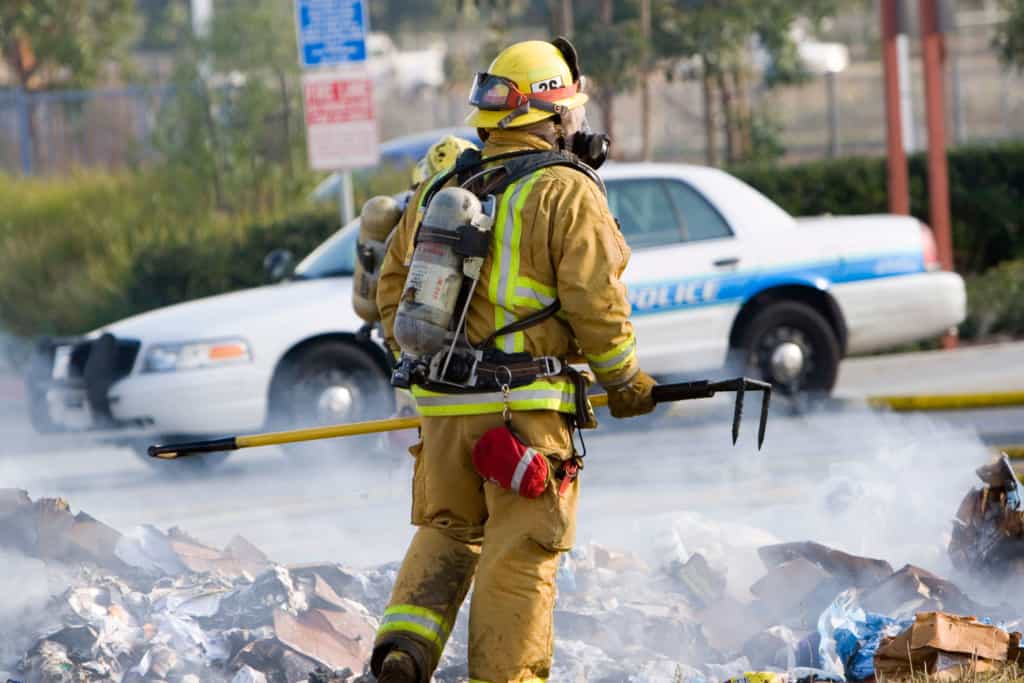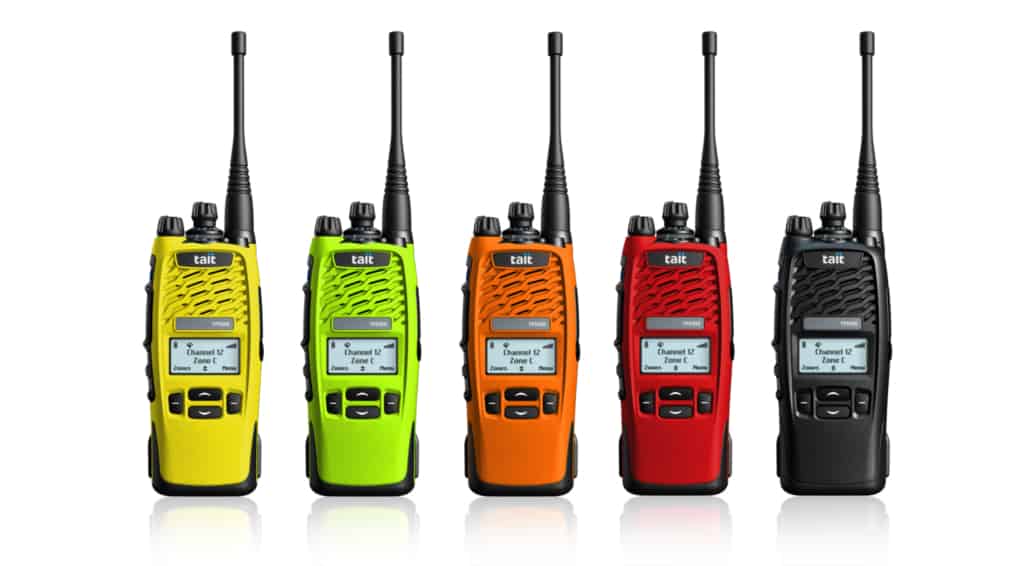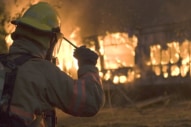Richard Russell, Business Development Tait EMEA, speaks about some of the challenges fire rescue services face with legacy communications and discusses potential solutions.
Fire rescue services have a growing emphasis on limited budgets, resulting in a need to achieve greater efficiencies – do more with less. This may sound familiar but are these perceived cost cuttings and procurement decisions actually delivering best value?
Low cost solutions may on paper seem appropriate but more often than not they turn out to be a false economy, resulting in poor performance and a route to unforeseen risks and dangers. Cost of ownership may increase and ultimately lead to rejection by the users who lose trust in the equipment that is supposed to help protect them.
So, how can this be avoided?
To mitigate risk, high quality and dependable communications are vital. Firefighters have their own unique communications requirements, not only for their own safety and the successful outcome of their mission, but for the safety of the public they serve.
Arguably firefighters face the harshest challenges invariably operating in the most hostile and punishing environments. Often the work is very physically demanding and extremely stressful. Firefighters often experience exhausting heat in hazardous conditions while working in low to zero visibility. Such conditions shouldn’t be underestimated especially with the threat to their well-being.
Why is fire rescue such a challenging environment for radio communications and how can they be resolved?
The combination of extreme conditions and coping with the necessary PPE kit, such as fire protection suits, heavy boots, thick protective gloves, breathing masks, helmets and heavy air tanks can make a firefighter’s task daunting.
This makes for a very challenging environment for effective communications. Throughout the years, analog radios have attempted to address these issues and some question the performance of Breathing Apparatus Respiratory Interface Equipment (BARIE). The evolution of purpose designed, digital solutions (radios, accessories, biometric monitoring and communications infrastructure) have driven significant improvements in firefighter performance and safety.
The key to resilient and safe communications is providing reliable coverage, audio that is intelligible and knowing that your radio and connected accessories have been optimized together – along with any supporting radio infrastructure installed in complex building structures to provide essential coverage.
In the interest of safety, this combination must be tested and proven to avoid issues commonly found in legacy configurations.
Equipment deployed on an ad hoc basis can often result in poor/unintelligible audio, along with susceptibility to interference and distorted transmissions. These may even generate spurious radiated emissions, blocking other life critical transmission, points that the procurement and supply chain may not even consider! Fortunately, new regulatory compliance RED (Radio Equipment Directive 2014/53/EU) attempts to address this issue.
Breathing apparatus teams, incident communications and command vehicles require enhanced unified communications that converge technology. Future solutions will use digital communications including narrowband Digital Mobile Radio (DMR), Bluetooth, Wi-Fi and LTE – all elements of a solution that will ultimately monitor the safety and predict the well-being of firefighters. We call this solution TAIT AXIOM Mobiles.
Vehicle-Area-Network and firefighter biometrics
Creating a standards-based network of networks, this vehicle-area-network travels with users, providing connectivity via whatever carrier is available to ensure that urgent calls always get through.
Users at the command center can effectively monitor the remote fireground communications. Teams on the fireground can connect mobile devices like tablets or laptops by Wi-Fi to access critical information over LTE networks. Officers can connect Bluetooth headsets for easy, hands free communication. It’s the ideal platform to maintain reliable real time voice communications required between command centers and the fireground and to connect both the safety systems used today and enable those coming in the future, including firefighter biometrics.
These are some of the critical considerations we strive to resolve – we work with our customers to understand their needs then design solutions that deliver the communications and provide the support services required to resolve these complex issues.
Enhancing firefighter safety and coverage
Radio communication coverage brings its own set of challenges, requiring specialist RF engineering knowledge, an area of expertise for Tait Communications given our extensive experience spanning five decades.

The Tait TP9361 Intrinsically Safe DMR portable
As a leading manufacturer of integrated DMR Tier II, Tier III and LTE solutions, Tait Communications uses its advanced technology to achieve the highest standards. This includes the Tait ruggedized blue TP9361 ATEX devices that meet rigorous MIL810 Standards categories C, D, E, F & G and the extreme environments experienced during firefighting.
This means they can be subjected to high temperatures, immersed in liquids, subjected to thermal shock, low temperatures, humidity, rain, sand and dust, physical shock, salt fog, low pressure and solar radiation – this makes them Tait Tough and ideal for fire rescue.
The fundamental requirements of fire rescue communications are:
- Clear intelligible voice communications
- Maximum transmit power at UHF frequencies to penetrate brick, concrete and steel reinforced buildings
- A form factor that’s easy to use and inherently reliable.
Tait Communications has developed its latest ATEX intrinsically safe radio models to match these requirements for maximum transmit power of 4 Watts in UHF for certain hazardous gas atmospheres requiring IIA rating.
This means a quadrupling of transmit power compared to IIC.
With IP67 ingress protection, 4 watts of Tx power and industry leading receiver performance it’s an ideal ATEX solution for fire ground incident use enhancing usable range and firefighter safety.
Digital radio enhances efficiency, safety and well-being especially when tracking location of assets. Combined data services including packet data for workforce management, telemetry, SCADA and customer specific applications are all possible.
What are the procurement and regulatory compliance challenges?
Fireground communications is more than just a group of radios, it’s an optimized solution that is needed and should be demanded by all FRSs.
Procurement teams must remember the need for both ATEX certification and compliance with the international ETSI (European Telecommunications Standards Institute)-defined standards under the RED (that set the minimum requirements to ensure solutions’ safety and compatibility) at a system level – the radio plus any accessories connected directly to it.
RED is intended to limit interference caused by incompatible radios and accessories. It is essential that life safety solutions integrate the radio and accessory correctly, while providing connectivity and access to any extended communication system and are available when they are needed most.

Optimizing speech intelligibility
Migration to digital can bring significant advantages, such as increased channel efficiency and capacity. But for BARIE and FRSs the priority is “clear and intelligible audio”. It cannot be over-emphasized that the radio & accessory solution needs to be properly integrated with BARIE kit, after all it’s the “firefighters’ lifeline”.
The need to hear and be heard especially when wearing a helmet and breathing mask is critical. At Tait we collaborate with safety equipment manufacturers such as Dräger Safety and others to integrate a radio and accessory solutions with these secondary audio accessories.
The specialist service Tait provides is to assist with the most challenging issue expressed by many FRSs: optimizing the whole system to ensure there are no surprises when it is put into service. You can’t just buy a radio and connect another manufacturer’s accessory and expect it to work properly – it’s not that simple!
How can we address the challenges of BARIE?
Tait Communications collaborates with specialist accessory suppliers such as Savox, which has advanced Remote Speaker Microphones (RSM) with exceptional omni-directional performance, which enhances speech intelligibility. This combination makes it very easy for firefighters to use, allowing them to focus on the job in hand.
With its large rugged design and exaggerated grip positions it is ideally suited for gloved hands, featuring dual PTT buttons, a large loudspeaker for enhanced audio performance and programmable side buttons. The integrated Nexus socket facilitates connectivity to various SCBA manufacturers equipment such as Dräger or Savox HC-E, HC-1 or TM-1 secondary accessories.

Specialist, rugged BARIE equipment. Images provided courtesy of Savox and Dräger Safety
The RSM securely connects to the Tait portable radios, ensuring the best, reliable and most consistent audio quality and speech intelligibility. If the user is responding to an incident where the mask isn’t needed they still have the convenience of using the RSM without having to take their radio out of their pocket leaving both hands free and the radio protected. The RSM has the convenience of a high/low volume control dedicated emergency button and 3.5mm socket for discreet listening, all with an impressive IP 67 and MIL810 G environmental rating.
Tait has a range of non-ATEX TP9300 series which feature an array of highly distinguishable colors in non-display, 4 key and 16 key variants, and are also available in black.

Tait TP9300 series portable radios
Power to last beyond a shift – maximum durability
The “Tait Tough” design philosophy is integral to the whole solution including battery technology – your radio is only as good as the battery that powers it. Poor battery performance should not be accepted in critical fire rescue environments. The Tait battery and charger solution is optimized for maximum performance and the ATEX battery circuitry enhances safety while adding value through greater return on investment over the life of the radio.
In conclusion, simply buying a simple point to point radio solution is not enough to ensure a modern firefighter is safe and equipped to do their job. A holistic solution needs to looked at and procured, working with experts from within and outside the firefighter community, and partnering with suppliers who understand the real needs.
 This article originally appeared in the October issue of Land Mobile Magazine, and has been republished here with permission.
This article originally appeared in the October issue of Land Mobile Magazine, and has been republished here with permission.
Click here to learn more about Tait products and solutions for the Fire and Emergency Response sector, or here if you’re curious as to how tough is “Tait tough”.




